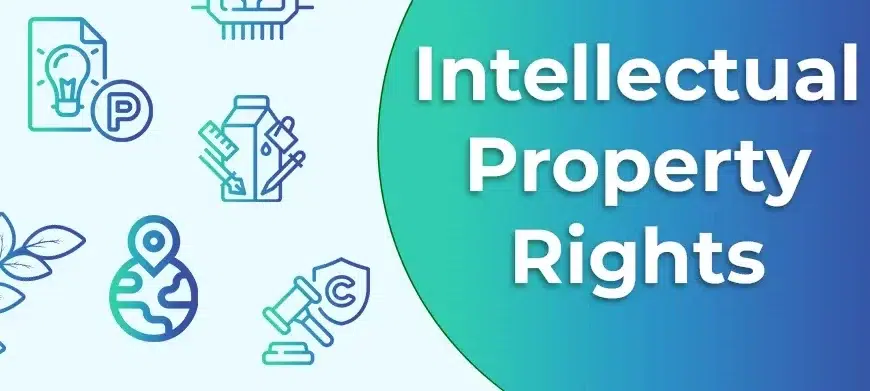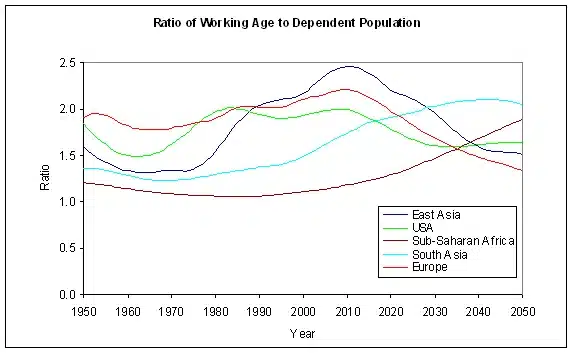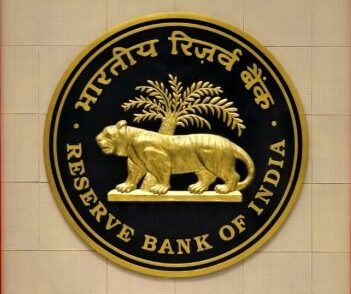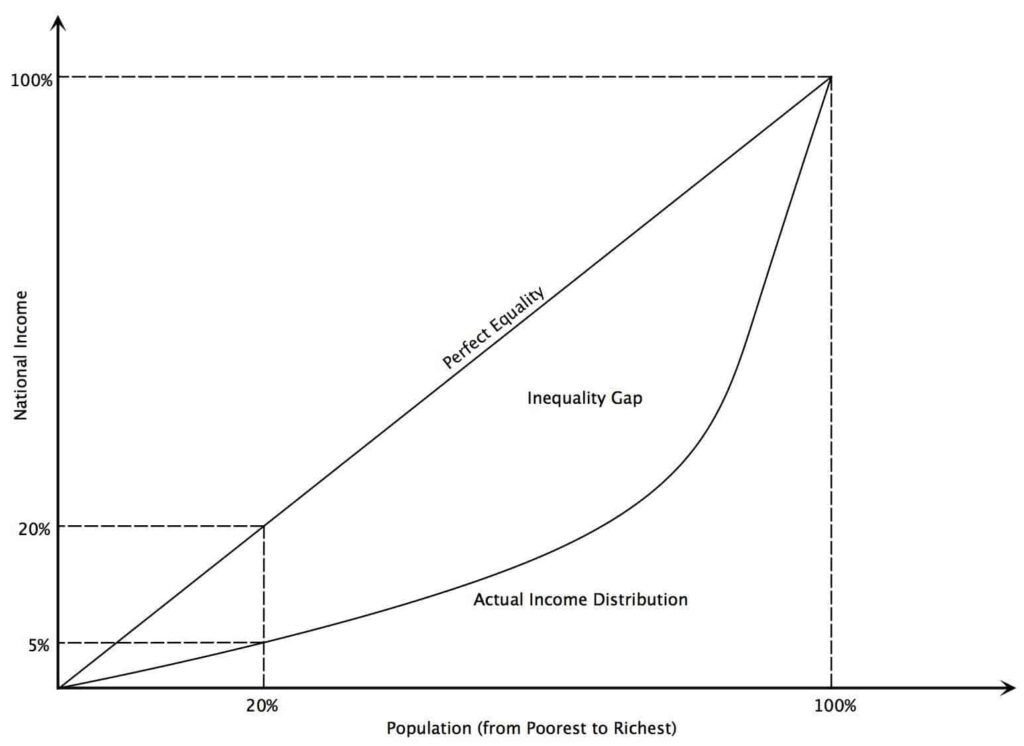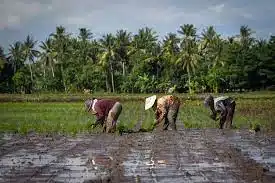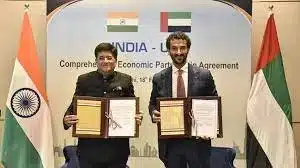Definition of Poverty
Poverty is a social phenomenon wherein a section of society is unable to fulfill even its basic necessities of life. The UN Human Rights Council has defined poverty as “A human condition characterized by the sustained or chronic deprivation of the resources, capabilities, choices, security and power necessary for the enjoyment of an adequate standard of living and other civil, cultural, economic, political and social rights”.
The poor are those who live Below the Poverty Line (BPL). The poverty line is defined in terms of per capita household expenditure. Poverty manifests itself in the form of both absolute poverty as well as relative poverty.
Causes of Poverty:
- Population Explosion: India’s population has steadily increased through the years. During the past 45 years, it has risen at a rate of 2.2% per year, which means, on average, about 17 million people are added to the country’s population each year. This also increases the demand for consumption goods tremendously.
- Low Agricultural Productivity: A major reason for poverty in the low productivity in the agriculture sector. The reason for low productivity is manifold. Chiefly, it is because of fragmented and subdivided land holdings, lack of capital, illiteracy about new technologies in farming, the use of traditional methods of cultivation, wastage during storage, etc.
- Inefficient Resource utilisation: There is underemployment and disguised unemployment in the country, particularly in the farming sector. This has resulted in low agricultural output and also led to a dip in the standard of living.
- Low Rate of Economic Development: Economic development has been low in India especially in the first 40 years of independence before the LPG reforms in 1991.
- Price Rise: Price rise has been steady in the country and this has added to the burden the poor carry. Although a few people have benefited from this, the lower income groups have suffered because of it, and are not even able to satisfy their basic minimum wants.
- Unemployment: Unemployment is another factor causing poverty in India. The ever-increasing population has led to a higher number of job-seekers. However, there is not enough expansion in opportunities to match this demand for jobs.
- Lack of Capital and Entrepreneurship: The shortage of capital and entrepreneurship results in low level of investment and job creation in the economy.
- Social Factors: Apart from economic factors, there are also social factors hindering the eradication of poverty in India. Some of the hindrances in this regard are the laws of inheritance, caste system, certain traditions, etc.
- Colonial Exploitation: The British colonisation and rule over India for about two centuries de-industrialised india by ruining its traditional handicrafts and textile industries. Colonial Policies transformed india to a mere raw-material producer for european industries.
- Climatic Factors: Most of india’s poor belong to the states of Bihar, UP, MP, Chhattisgarh, odisha, Jharkhand, etc. Natural calamities such as frequent floods, disasters, earthquake and cyclone cause heavy damage to agriculture in these states.
- Poverty Trap: Poverty trap is a spiraling mechanism which forces people to remain poor. It is so binding in itself that it doesn’t allow the poor people to escape it. Poverty trap generally happens in developing and under-developing countries, and is caused by a lack of capital and credit to people.
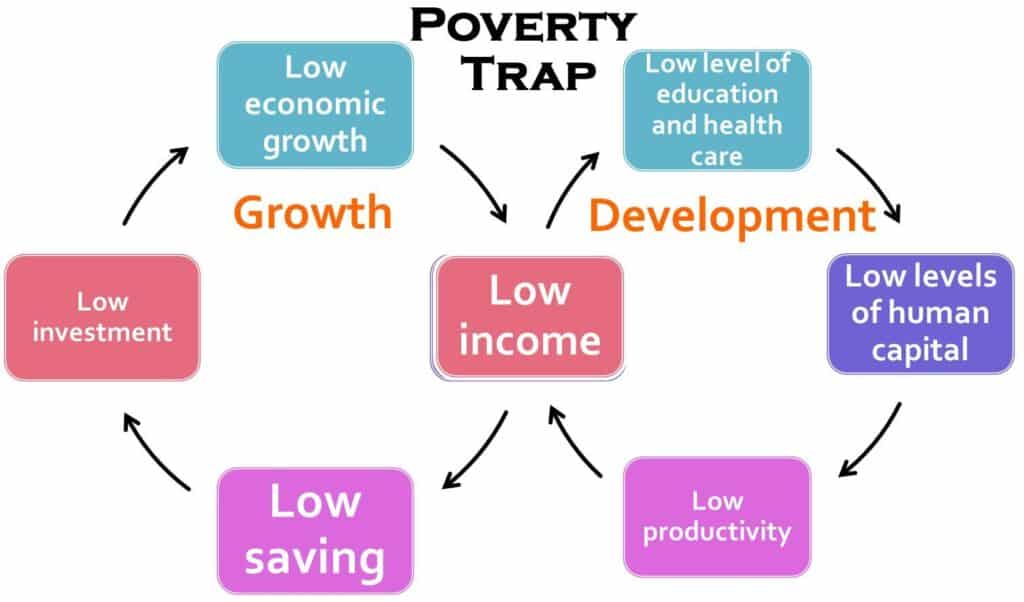
Types of Poverty:
Absolute Poverty: This concept is based on absolute needs of the people and people are defined as poor when some absolute needs are not sufficiently satisfied. It is also defined in terms of insufficiency of basic needs. In India, these basic needs are measured in terms of calorie intake of 2400 in rural areas per person per day and 2100 in urban areas. The corresponding monetary yardstick for calorie intake is based on per capita monthly household expenditure.
Relative Poverty: This concept is related to the general standard of living in a society. Thus, according to this concept, people are poor because they are deprived of the opportunities, comforts and self-respect regarded as normal in the community to which they belong. In relative poverty, poor are defined as, a person or family whose incomes are less than the average income of the community. Thus, Relative Poverty relates to inequalities in a society. India is characterised by both in extreme measures, i.e., absolute and relative poverty.
Situational Poverty: It is a temporary type of poverty based on occurrence of an adverse event like environmental disaster, job loss and severe health problem like corona pandemic. People can help themselves even with a small assistance, as the poverty comes because of unfortunate events.
Generational Poverty: It is handed over to individual and families from one generation to the another. This is more complicated as there is no escape because the people are trapped in its cause and unable to access the tools required to get out of it.
Rural Poverty: It occurs in rural areas with population below 50,000. It is the area where there are less job opportunities, less access to services, less support for disabilities and quality education opportunities. People are tending to live mostly on the farming and other menial work available to the surroundings.
Poverty Estimation in India:
- Poverty estimation in India is carried out by NITI Aayog’s task force through the calculation of poverty line based on the data captured by the National Sample Survey Office under the Ministry of Statistics and Programme Implementation (MOSPI).
- Poverty line estimation in India is based on the consumption expenditure and not on the income levels.
- Poverty is measured based on consumer expenditure surveys of the National Sample Survey Organisation. A poor household is defined as one with an expenditure level below a specific poverty line.
- The incidence of poverty is measured by the poverty ratio, which is the ratio of the number of poor to the total population expressed as a percentage. It is also known as head-count ratio.
- Alagh Committee (1979) determined a poverty line based on a minimum daily requirement of 2400 and 2100 calories for an adult in Rural and Urban area respectively.
- Subsequently different committees; Lakdawala Committee (1993), Tendulkar Committee (2009), Rangarajan committee (2012) did the poverty estimation.
- As per the Rangarajan committee report (2014), the poverty line is estimated as Monthly Per Capita Expenditure of Rs. 1407 in urban areas and Rs. 972 in rural areas.
| Committe | Recommendations |
| Alagh Committee (1979) | The YK Alagh Committee had later adopted the approach of measuring poverty as starvation (how much people eat). The people consuming less than 2100 calories in urban areas or less than 2400 calories in the rural areas are poor. The logic behind the discrimination between rural and urban areas was that rural people do more physical work. |
| Lakdawala Committee (1993) | This committee defined poverty line on the basis of household per capita consumption expenditure. The committee used CPIIL (Consumer Price Index for Industrial Labourers) and CPI AL (Consumer Price Index for Agricultural Labourers) for estimation of the poverty line. |
| Tendulkar Committee (2009) | Suresh Tendulkar committee was constituted by the Planning Commission in 2005. This committee recommended to shift away from the calorie-based model and made the poverty line broad by considering monthly spending on education, health, electricity, and transport also. Tendulkar committee adopted the cost of living as the basis for identifying poverty. |
| Rangarajan Poverty Estimation (2012) | The energy requirement works out to 2,155 kcal per person per day in rural areas and 2,090 kcal per person per day in urban areas. |
| World Bank’s Poverty line | The World Bank estimates of poverty are based on the poverty line of US $1.25 per person per day measured at 2005 international price and adjusted to local currency using PPP (Purchasing Power Parity). |
Anti-Poverty Strategy:
- Inclusive growth
- Financial Inclusion
Inclusive growth needs to be achieved to reduce poverty and other disparities and raise economic growth. Over the recent past, three critical strategies and policy interventions for poverty reduction have emerged, which are aimed at enhancing availability and access to the following three types of infrastructure:
- physical infrastructure (roads, electricity, irrigation);
- economic infrastructure (financial services); and
- social infrastructure (education and health).
Financial inclusion aids inclusive growth, economic development, and financial deepening. More specifically, it expands poor people’s access to financial services, increasing their economic opportunities and improving their lives. The government’s initiative to link bank accounts, mobile numbers and national identification numbers (JAM or the Jan Dhan-Aadhaar-Mobile trinity) has contributed to substantial advances in financial inclusion. A flagship initiative for universal banking coverage has also been launched to ensure that every Indian has a bank account, enabling the government to transfer subsidies and other benefits directly to the target beneficiaries and plug leakages in its welfare programmes.
Poverty Alleviation Programs in India
- Integrated Rural Development Programme (IRDP): It was introduced in 1978-79 and universalized from 2nd October, 1980, aimed at providing assistance to the rural poor in the form of subsidy and bank credit for productive employment opportunities through successive plan periods.
- Jawahar Rozgar Yojana/Jawahar Gram Samridhi Yojana: The JRY was meant to generate meaningful employment opportunities for the unemployed and underemployed in rural areas through the creation of economic infrastructure and community and social assets.
- Rural Housing – Indira Awaas Yojana: The Indira Awaas Yojana (LAY) programme aims at providing free housing to Below Poverty Line (BPL) families in rural areas and main targets would be the households of SC/STs.
- Food for Work Programme: It aims at enhancing food security through wage employment. Food grains are supplied to states free of cost, however, the supply of food grains from the Food Corporation of India (FCI) godowns has been slow.
- National Old Age Pension Scheme (NOAPS): This pension is given by the central government. The job of implementation of this scheme in states and union territories is given to panchayats and municipalities. The states contribution may vary depending on the state. The amount of old age pension is ₹200 per month for applicants aged 60–79. For applicants aged above 80 years, the amount has been revised to ₹500 a month according to the 2011–2012 Budget. It is a successful venture.
- Annapurna Scheme: This scheme was started by the government in 1999–2000 to provide food to senior citizens who cannot take care of themselves and are not under the National Old Age Pension Scheme (NOAPS), and who have no one to take care of them in their village. This scheme would provide 10 kg of free food grains a month for the eligible senior citizens. They mostly target groups of ‘poorest of the poor’ and ‘indigent senior citizens’.
- Sampoorna Gramin Rozgar Yojana (SGRY): The main objective of the scheme continues to be the generation of wage employment, creation of durable economic infrastructure in rural areas and provision of food and nutrition security for the poor.
- Mahatma Gandhi National Rural Employment Guarantee Act (MGNREGA) 2005: The Act provides 100 days assured employment every year to every rural household. One-third of the proposed jobs would be reserved for women. The central government will also establish National Employment Guarantee Funds. Similarly, state governments will establish State Employment Guarantee Funds for implementation of the scheme. Under the programme, if an applicant is not provided employment within 15 days s/he will be entitled to a daily unemployment allowance.
- National Rural Livelihood Mission: Aajeevika (2011): It evolves out the need to diversify the needs of the rural poor and provide them jobs with regular income on a monthly basis. Self Help groups are formed at the village level to help the needy.
- National Urban Livelihood Mission: The NULM focuses on organizing urban poor in Self Help Groups, creating opportunities for skill development leading to market-based employment and helping them to set up self-employment ventures by ensuring easy access to credit.
- Pradhan Mantri Kaushal Vikas Yojana: It will focus on fresh entrant to the labour market, especially labour market and class X and XII dropouts.
- Pradhan Mantri Jan Dhan Yojana: It aimed at direct benefit transfer of subsidy, pension, insurance etc. and attained the target of opening 1.5 crore bank accounts. The scheme particularly targets the unbanked poor.
Major Reasons for Failure of Poverty Alleviation Programmes:
- Planning process is faulty
- Identifying the ‘poor’
- Defining ‘poor’
- Processing of the identification involves too many stages.
- Lack of technology up gradation.
- Ideally the programs should be broader based. (benefitting the large number of people).
- Disjointed programs- not integrated. (Beneficiaries overlap, the same rural areas benefited from served programs.)
- Implementation of programs:
- Corrupt officials/ staffs.
- Lack of involvement of people.
- Local politics. (selection of beneficiaries)
- Improper follow up of program/ review or revision is practically none existed.
- Lack of support from the credit and marketing system:
- Role of local money lenders and banks.
- Inability to sustain income generation from the asset credited.
Impacts of Corona Pandemic
The pandemic struck India when it recorded its lowest economic growth in over a decade. The slowing economy had disproportionately impacted the rural areas, where the country’s majority of consumers and poor reside. Unemployment was high; consumption expenditure was constantly coming down; and public spending on development was stagnant. These three factors together dictate the wellbeing of an economy.
Pew Research Center, using World Bank data, has estimated that the number of poor in India (with income of $2 per day or less in purchasing power parity) has more than doubled from 60 million to 134 million in just a year due to the pandemic-induced recession. This means, India is back in a situation to be called a “country of mass poverty” after 45 years.
With this, India’s uninterrupted progress in poverty reduction since the 1970s has stalled. Last time India reported an increase in poverty was in the first quarter-century after Independence. From 1951 to 1974, the population of the poor increased from 47 to 56 per cent of the total population.
In the recent years, India emerged as the country with the highest rate of poverty reduction. In 2019, the Global Multidimensional Poverty Index reported that India lifted 271 million citizens out of poverty between 2006 and 2016. Contrast this with the situation in 2020: the highest global poverty increase happened in India.
India has not counted its poor since 2011. But the United Nations estimated the number of poor in the country to be 364 million in 2019, or 28 per cent of the population. All the estimated new poor due to the pandemic is in addition to this.
Steps Needed:
- Adopt a comprehensive reform approach to further lower the incidence of poverty and reverse the pattern of growing inequality. This multi-dimensional approach must include education, health care and labour market reforms.
- Enhance the cost effectiveness properties of the MGNREGA, by ensuring that the wage is set at a level around the minimum wage.
- Re-target environmentally harmful subsidies, to more directly support poor households and increase equity.
- Tackle regulatory and infrastructure barriers still preventing small towns from realising their potential.
Also refer :


